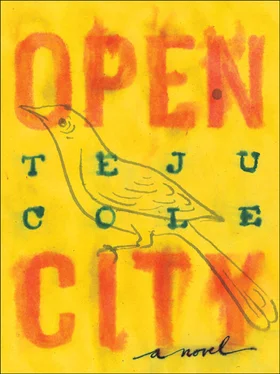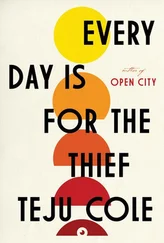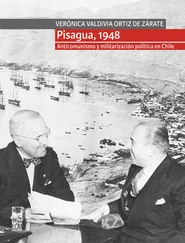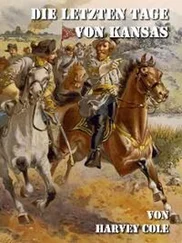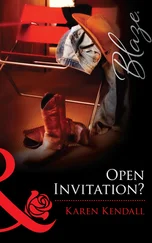Such juxtapositions were common to the many buildings around, and the same layering extended to their names, which recounted the history of institutions that had begun as civic establishments and gradually become dependent on philanthropic and corporate benefactors. In the ornately carved stone lintel of one of the older buildings were the words BABIES AND CHILDREN’S HOSPITAL 1887; next door to it, in modern sans-serif font and glossy blue paint, was MORGAN STANLEY CHILDREN’S HOSPITAL. From Mitchel Square Park — dedicated to veterans of the First World War and named for a New York City mayor who had died in the war — I could see the Mary Woodard Lasker Biomedical Research Building, the Irving Cancer Research Center, the Sloane Hospital for Women, and the Russ Berrie Medical Science Pavilion. Parked in front of the Children’s Hospital was yet another donation, an ambulance of the FDNY Fire Family Transportation Foundation. Some of these were older, many were recent endowments, but all established the powerful link between modern medical care and memorials on the one hand, and memorials and money on the other. A hospital is not a neutral space, it is not a purely scientific space, nor is it the religious one it had been in medieval times; the reality now involves commerce, and the direct correlation between donating large sums of money and having a building named in memoriam. Names matter. Everything has a name.
On the great rock of the square, some boys were playing on skateboards, negotiating the gentle but craggy gradient up and down, and laughing. I read the plaque at the 166th Street entrance memorializing Mitchel. He had been the city’s youngest mayor when he was elected to office at the age of thirty-four, at the beginning of the war, and his death in Louisiana four years later, while he was flying with the Army Aviation Corps, had occasioned a great outpouring of public grief. As I read the plaque, musing on the strange middle name Purroy, a man in a large Yankees jacket came into the park. He stood next to me, and asked for two dollars for the bus, but I refused him wordlessly, and went back out to Broadway. Just north of the park, beyond the bronze and granite World War I memorial, its three heroes arrested forever in battle — one standing, one kneeling, the third slumped in mortal injury — the temper of the neighborhood changed, and the hospital campus, as though the past had suddenly transformed into the present, gave way to the barrio.
Almost immediately, there were fewer of the white medical professionals who had been milling about the entrance to Milstein, and the streets were full now of Dominican and other Latin-American shoppers, workers, and residents. Someone coming toward me waved, exuberant. It was a tall, middle-aged woman with an infant, but I didn’t recognize the face. Mary, it’s Mary, she said. I worked with the old fellow, you remember? She shook her head with the surprise of having seen me. I reminded her of my name. And it was indeed her; she lived up in Washington Heights now, and was going to begin a nursing program at Columbia once her little boy went to day care. I congratulated her, and felt in myself an amazement at how quickly life went through its paces. We spoke a little about Professor Saito. The old man was good, you know, she said. He always enjoyed your visits so much, I don’t know if he told you. It was difficult to see him go like that, to see him have it so difficult at the end. I thanked her for having taken care of him. Her baby started crying, and we bid each other goodbye.
From the intersection of 172nd Street, the George Washington Bridge came into view for the first time, its lights soft yellow points in the gray distance. I walked past small shops selling knickknacks, the sprawling window display of El Mundo Department Store, and the perpetually popular restaurant El Malecon, to which I occasionally came for dinner. Across the street from El Malecon was a massive and architecturally bizarre building. It had been built in 1930, and was known back then as the Loews 175th Street Theatre. Designed by Thomas W. Lamb, it was filled with glamorous detail — chandeliers, red carpeting, a profusion of architectural ornament within and without — and the terra-cotta elements on the façade drew from Egyptian, Moorish, Persian, and Art Deco styles. Lamb’s stated aim was to cast a spell of the mysterious on the “occidental mind,” with the use of “exotic ornaments, colors, and schemes.”
Now the building had a marquee sign, with white letters on a black background, that read: COME ON IN OR SMILE AS YOU PASS. It had become a church, but the gilded-age excess remained. This religious function had begun in 1969, and the theater, renamed the United Palace, still hosted several congregations. The best-known and longest-running of them was the one shepherded by the Right Reverend Frederick Eikerenkoetter. Reverend Ike, as he was popularly known, preached prosperity and lived in the princely manner befitting, in his view, a faithful servant of God’s word. Parked in front of the church, and weirdly congruent with its false Assyrian battlements and decontextualized pomp, was his green Rolls-Royce, one of several luxury cars he owned. His church, the United Church Science of Living Institute, once numbered in the tens of thousands. It was sparser now. But, still, the people gave freely, as they had done since the sixties.
The theater, America’s third largest when it was built, seating over three thousand, had hosted films as well as vaudeville shows in its earlier incarnation. Al Jolson had played there, as had Lucille Ball, and back then it had been surrounded by expensive restaurants and luxury goods shops. Now, from the doorway of El Malecon, in the waning light of a Friday evening, it looked quiet. The jumble of architectural styles failed, more than seventy-five years on, to resolve themselves into anything meaningful. Even in its best days, it must have looked alien in the environment. It looked more so now, still reasonably well maintained, but utterly out of place, its architecture a world away from that of the small shops, its grand columns and arches irrelevant to the fatigued immigrants who rarely raised their heads to look above street level. The spell had faded.
The door of a parked minivan opened. A young boy stuck his head out, and vomited into the gutter, and from within the minivan, the reassuring voice of a woman spoke to him. The boy vomited again, then he looked up, with a cherubic expression, and caught my eye. I walked on, farther up Broadway, drawn, it seemed, into the fast-changing face of the neighborhood. There was another ornate building at the 181st Street corner. And here was the old competitor to the Loews 175th Street Theatre, the Coliseum, which, in its own time, before the Loews was built, was the third largest theater in the country. A brief and sad claim to fame: to have once been the third largest. Now, greatly altered, it had become the New Coliseum Theatre, and it shared space with a large pharmacy and a hodgepodge of other storefronts; only above its first floor were there hints of the 1920s architecture.
I turned left at 181st, and walked down to Fort Washington, past the A train station and the Fort Washington Collegiate Church, and then to Pinehurst, which was connected to 181st not directly but by a long and narrow flight of stairs rising into a small wooded tangle that opened out into the street proper. The stairs, vertiginous and reminiscent of the much longer stairs leading up to Sacré-Coeur in Montmartre, were in the shade of trees, fringed on both sides with dense, weed-choked plots, and bifurcated by a double rank of iron railings in a manner that evoked a funicular railway; I half-expected a tramcar to come chugging down the left side while I walked up the right. The stairs brought me out into the dead end of Pinehurst, a different world from the busy street life a few dozen yards below: residential buildings, a richer, whiter neighborhood. And so I proceeded among the whites, entering their quieter street life, feeling for minutes that I was the only person walking around a depopulated world, and reassured only by occasional signs of life: an old lady at the end of the block carrying a bag of groceries, a pair of neighbors in conversation in front of an apartment building, and the appearance, one after the other, of glimmering lights from within the windows of lovely brick houses set back from the street. To my right was Bennett Park, still and silent, animated only by the occasional fluttering of the American flag and the black POW flag hoisted below it. Pinehurst ended at 187th, and that brought me around to Cabrini, which ran alongside the river.
Читать дальше
